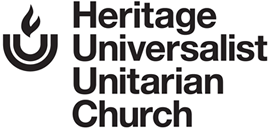by Mike Roberts, Church Historian
The 1850s were a time of great turmoil for the First Universalist Society. Church finances were a troubling issue throughout the decade. Despite being in debt, the society decided to leave its home on Walnut near Third and sold the land upon which it sat to Henry E. Spencer, who had just completed four terms as mayor of the city. The purchase price was $23, 230. The building that housed the church was sold to the Second Universalist Society for $1,650. Shortly thereafter, land on Plum Street was purchased and plans were started to build a new church there. The cost of the three parcels of land was over $5,000 and the new church structure was estimated to cost $13,000. Despite the seeming profit in the move, the church went deeper and deeper into debt.
Several schemes to raise money were tried, including the creation of a sinking fund, the use of high-pressure tactics to try to increase pew rentals, and the sale of subscription stock in the new church. Frustration reached a point that Brothers Hunting and Alley offered a resolution to the Board of Trustees condemning the congregation’s unwillingness to financially support the church. They stated that many of the members took no consideration of the fact that they could not keep a preacher with “air and promises to pay.” They also questioned what those members would think when they came to worship on the Sabbath only to find themselves prevented from sitting in their pews due to unpaid pew rentals. They observed that these members were in violation of the spirit of the church that says, “You should do unto others as you would have done to yourself.” They concluded that the Board of Trustees must act “with energy and zeal worthy of the course we are engaged in … if we do not act we must sink into oblivion and the sound of Gabriel’s trumpet will not awaken us from lethargy.”
Problems continued when the roof of the new Plum Street Church was declared unsafe and ready to collapse. The board was forced to take out a $2,000 loan to fix the roof and found it necessary to rent the Melodeon Theater to hold services. The church had rented this theater while awaiting the construction of the church. The Melodeon was the most famous music hall in town and Jenny Lind performed there. However, the church members may later have had second thoughts about worship there. It was sold and converted into one of the biggest gambling halls in the Midwest.
There also must have been confusion among the residents of Cincinnati as to what the First Universalist Society was all about. In March of 1856, the church added to its name “Church of Cincinnati.”
It was also evident that church membership was dropping. A general census was taken of those listed on the membership rolls and many names were withdrawn due to non-attendance and death. The final revised membership roster was presented to the board and it totaled 30 brothers and 40 sisters.
In 1854, Isaac Williamson was hired as minister of the society and he tried to assist the church to get itself on course. However, Williamson suffered from a severe respiratory illness and was forced to take long leaves of absence to regain his health. Finally, in 1857 he gave in to the illness and resigned his position with the church. However, he did remain very active with the church and lived the rest of his life in Cincinnati. His absences and illness, however, put sole responsibility on the board to lead the church both financially and spiritually. To assess their situation, the board appointed two church members, Gerhardus Demarest and A. W. Churchill, and newly hired minister, George Flanders, to examine the society and its constitution and report back.
The report was a scathing indictment of the way the church was run. It viewed the Board of Trustees as having two distinct yet unlike duties. One was to manage the church finances. The committee felt that many in the church contributed to its monetary fund but only a few had a say in how the money was spent. They, therefore, recommended that all major financial transactions should be put to a vote of the entire membership.
Second, the committee felt that the board had completely failed in providing the spiritual leadership for the church and, furthermore, that they should not be expected to do so. The board had provided “disciplinary oversight” to the congregation but had done little to foster spiritual growth. This was supported by the fact that the church had not brought in a single new member in the previous year.
The committee recommended that the First Universalist Society should completely rewrite its constitution to address the issues outlined in the report. This was done and the new constitution was adopted by the membership on March 11, 1858.
Photo: Plum Street building, early location of the First Universalist Society of Cincinnati.
Image provided by Mike Roberts, from a newspaper.

